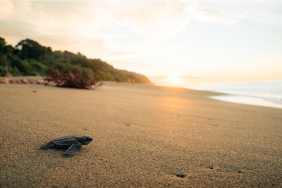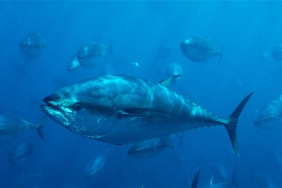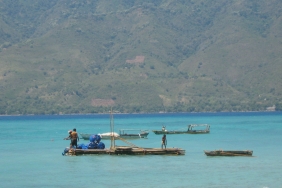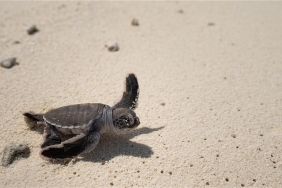LABUAN BAJO FISHERMEN RELEASE SHARKS TO KEEP CATCHES PLENTIFUL (1)
By: Euis Zulfiaty (Bycatch and Sharks Conservation Program Assistant)
Who doesn't know Labuan Bajo? In the west of Flores Island, Labuan Bajo, the gateway to the Komodo National Park World Heritage Site, continues to grow into one of the nation's top tourism destinations - without losing sight of its identity as home to charismatic marine animals, especially sharks and manta rays.
Unfortunately, shark landings in Labuan Bajo are still common. Generally, these sharks are still classified as juveniles. At least during the last month of March 2017, 421 shark pups were accidentally caught by fishermen. "The sharks that are caught are usually already dead, entangled in nets or caught in fishing lines," was the general confession of the fishermen I met landing sharks.
Records show that black tip reef sharks (Carcharhinus melanopterus) dominate 65% of these landed sharks, while the other 35% are shark species from the family Carcharhinidae.
It's not that fishermen don't want to try releasing sharks. It's just that they don't understand the best safe way to release sharks that are still healthy or weak. "We are still struggling with how to release it, sometimes I am also afraid of this shark," explained one of the fishermen from Ujung Village, Labuan Bajo.
If this continues without increasing the capacity of fishermen in handling shark bycatch, it will certainly continue to lead to unfortunate outcomes for sharks living in fishing locations.
For the past month, I have been traveling around Kampung Ujung, Labuan Bajo, to provide assistance in handling shark bycatch to fishermen. A program initiated by WWF-Indonesia to reduce shark mortality by mitigating shark bycatch in fishing gear.
The location of Kampung Ujung is close to the TPI (Fish Landing Site), making it easier to monitor shark landings made by fishermen. This location was also chosen as a mentoring location because the majority of fishermen fish for pelagic fish, which allows sharks to get caught in the fishing line.
Based on the results of observations in March - April 2017, sharks are often found in fishermen's catch locations. In fact, in a certain month, in one float fishing line containing 10 fishing lines, 2 - 3 sharks can be found stuck.
The fishermen's openness to shark fisheries information and awareness to release sharks has also been seen with enthusiasm when participating in the assistance. We introduced fishermen to a modified tool to remove the fishing line from the shark's mouth called De hooker. Fishermen also train themselves in handling sharks using shark puppets as props.
Here, we also share many stories. Starting from how to catch fish, talking about ocean conditions, catch locations that have the potential to have sharks, to telling what fishermen have done in dealing with sharks caught in the eyes of fishing rods.
If the shark is small, fishermen will lift it onto ketinting, a wooden canoe with additional bamboo on one side and an engine as a propulsion. They usually use their bare hands to lift the shark onto the ketinting, then pry out the fishing line using pliers, and release them back into the sea, where they belong.





